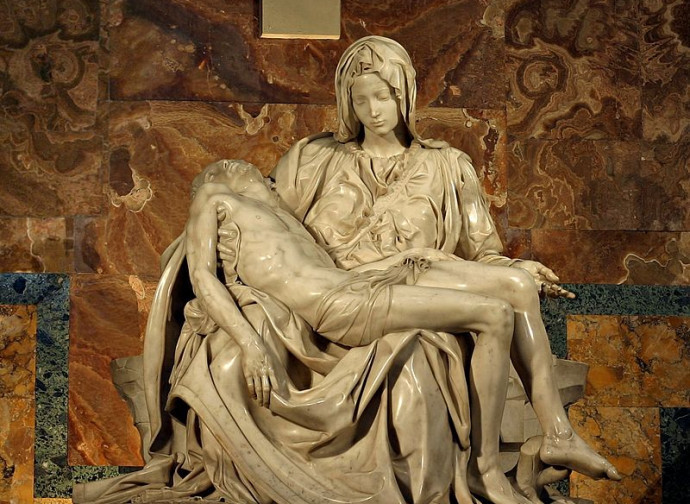Our Lady of Sorrows
Wonderfully summed up in the Stabat Mater of Blessed Jacopone da Todi, devotion to Our Lady of Sorrows gained particular impetus in Middle Ages, also thanks to the constitution in 1233 of the Order of the Servants of Mary. In 1667 the Servites obtained official approval for the celebration of the “Seven Sorrows of Mary”, a number based on as many episodes narrated in the Gospels

Wonderfully summed up in the Stabat Mater of Blessed Jacopone da Todi, devotion to Our Lady of Sorrows gained particular impetus in the late Middle Ages, also thanks to the constitution in 1233 of the Order of the Servants of Mary. In 1667 the Servites obtained official approval for the celebration of the “Seven Sorrows of Mary”, a number based on as many episodes narrated in the Gospels: Simeon's prophecy (“and a sword will pierce your soul too”), the flight to Egypt, the three days of anguish that preceded the finding of Jesus among the doctors in the temple, the meeting on the way to Calvary, the suffering at the foot of the cross, the deposition and the burial of her Son.
But Mary's whole life was marked by sorrow, from the free acceptance of which her infinite love flowed. Saint Ildefonsus of Toledo (607-667) already explained that the sufferings of the Virgin were greater than those of all martyrs. And Saint Bonaventure († 1274), Doctor of the Church, wrote that “there is no pain similar to Her pain except that of the Son, to which the Mother’s pain is similar”. After several stages, it was St Pius X who fixed the date of the feast on 15 September (significantly, on the day after the Exaltation of the Holy Cross). Another change occurred with the liturgical reform of 1969. In the new calendar, although reduced to a simple memorial, the celebration has the name of “Our Lady of Sorrows”, which best expresses her participation in the saving work of her Son, “serving the mystery of the Redemption in dependence on Him and with Him” (Lumen Gentium, 56).
In this light of special cooperation in the Redemption - in the total service of the one Redeemer, Our Lord Jesus Christ - the title of Coredemptrix is explained. It has been used by pontiffs such as St Pius X, Pius XI and St John Paul II, by a servant of God such as the mystic Luisa Piccarreta and a formidable host of other saints such as Gabriel of Our Lady of Sorrows, Veronica Giuliani, Padre Pio, Teresa Benedicta of the Cross (Edith Stein), Maximilian Maria Kolbe, Frances Xavier Cabrini, Leopold Mandic and Mother Teresa of Calcutta. The latter said: “The papal definition of Mary Coredemptrix, Mediatrix of all graces and Advocate, will bring great graces to the Church”.
That title is the subject of theological study in view of a possible fifth Marian dogma. According to the disputed apparitions in Amsterdam by the visionary Ida Peerdeman in 1945-1959, Our Lady herself, presenting herself as “Lady of All Nations”, had explicitly asked for the proclamation of the dogma as “Coredemptrix, Mediatrix and Advocate”. She also prophesied that it would be much fought over, the last and the greatest.




